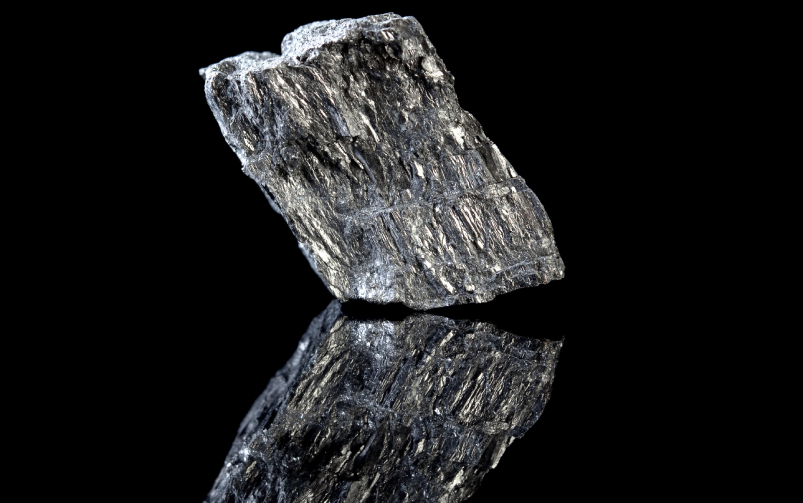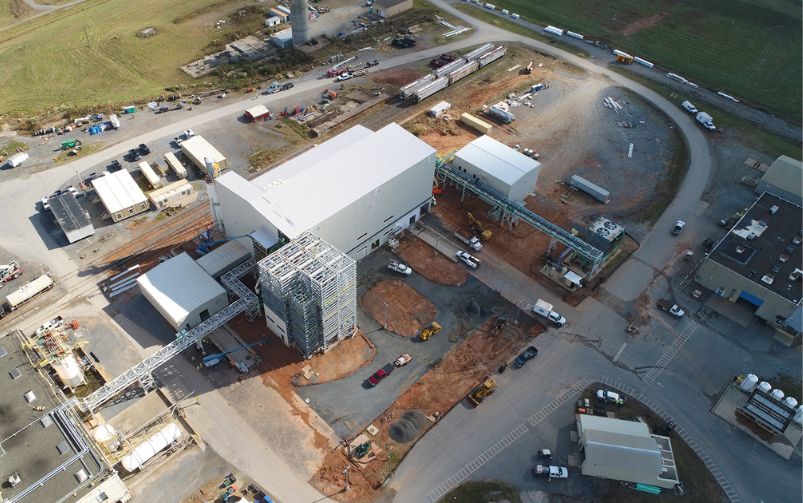Teck Resources is drafting a new permit application to expand a mill at its Quebrada Blanca mine operations. Courtesy of Teck Resources.
Welcome back to your weekly mining news recap, where we catch you up on some of the news you may have missed. This week’s headlines include construction being nearly complete at Iamgold’s Côté Gold project, a new lithium extraction technology that is less energy intensive and Teck lowering its guidance for copper, molybdenum and steelmaking coal production for the year.
The Gitxaała Nation launched a partial appeal of the B.C. Supreme Court ruling on the province’s mineral tenure system on Wednesday. The court’s ruling in late September found that the current automatic online staking system breaches the provincial crown’s duty to consult with Indigenous people. The Gitxaała Nation is not appealing that part of the decision, and called it an “important win.” It is seeking both to appeal the court’s refusal to quash specific mineral claims in Gitxaała territory and to prevent further automatic claim-staking on the Nation’s territory. The court granted the province 18 months to update the Mineral Tenure Act, during which the current system would remain in place. The Nation is also appealing the court’s ruling that the provincial government’s 2019 Declaration on the Rights of Indigenous Peoples Act was not legally enforceable.
First Quantum Minerals’ legal contract with the government of Panama, which allows the Cobre Panama copper mine to continue operating for at least 20 years, drew widespread protests this week, as reported by The Associated Press. Panama’s Supreme Court is now considering a lawsuit that alleges the country’s recently signed contract with First Quantum violates the constitution, as reported by Bloomberg. Labour unions, environmental activists and students object to mining in a biodiverse area of the country, and say the contract—which guarantees the government minimum annual payments of US$375 million from First Quantum and contains an option to renew for another 20 years—violates the country’s national sovereignty over its minerals.
Construction at Iamgold’s Côté Gold project south of Timmins is 92 per cent complete and the overall project is 90.6 per cent complete, as reported by CTV News. The company began construction at Côté Gold in 2020 and at the time expected it to take three years at a cost of $750 million. However, rising costs and other challenges delayed the start date until early 2024 and sent the cost of the project soaring to $1.3 billion. Once operational, Côté Gold is expected to produce an average of 365,000 ounces of gold per year over a 16- to 18-year mine life.
Vancouver-based junior miner Hertz Lithium Inc. and Pennsylvania State University are developing a new lithium extraction technology that could reduce the cost of extracting lithium from alpha spodumene, wrote Zachary Parsons in the November issue of CIM Magazine. The cost reductions would come from cutting energy consumption by using leaching to extract the lithium. Currently it is extracted through a process of ultra-high temperature roasting and acidic baking.
Mining companies are increasingly incorporating the United Nations (UN) sustainable development goals (SDGs) into their sustainability reporting, wrote Tijana Mitrovic in the September/October issue of CIM Magazine. The SDGs are 17 goals that provide a global plan to achieve a more sustainable and equitable future by 2030 by addressing poverty, inequality, climate change and more. But according to the UN, just 12 per cent of the goal targets were on track as of April. Miners that use the SDGs say they provide a framework for addressing multiple sustainability issues simultaneously.
CEEC International: Coalition for Minerals Efficiency awarded its 2022 medals at the Semi-Autogenous Grinding and High-Pressure Grinding Roll Technology (SAG 2023) conference in Vancouver in late September. The medals are awarded annually to authors of papers showcasing innovative approaches to improving efficiency in the resources sector. Among this year’s winners were authors from Sepro Mineral Systems, whose paper explored using microwave technology to improve processing efficiency, and authors from Anglo American and Eriez Flotation for a paper on commissioning a HydroFloat for use in a copper concentrator.
Teck Resources threw out its environmental permit application to expand a mill at its Quebrada Blanca copper mine in northern Chile and will draft a new one after feedback from regulators, as reported by Reuters. The company is seeking to boost the mill’s grinding capacity and said that restarting the application will allow it to “further optimize the scope of the project.”
In Teck’s third quarter results, released Monday, the company also disclosed construction delays and other setbacks at its Quebrada Blanca Phase 2 (QB2) project that will increase the project’s total costs by roughly US$600 million, to between US$8.6 billion and US$8.8 billion. Teck reported adjusted quarterly earnings before interest, taxes, depreciation and amortization (EBITDA) of $1.2 billion, driven by higher base metal sales and strong copper and steelmaking coal prices. However, Teck lowered its guidance for annual copper, molybdenum and steelmaking coal production for the year, due to a geotechnical event at Highland Valley Copper in August, construction delays on the QB2 molybdenum plant and steelmaking coal plant challenges.
CIM Magazine’s Ryan Bergen and David Anonychuk of SGS Natural Resources hosted a discussion with Marcella Munro, head of government and regulatory affairs at Teck Resources, and Chris Evans, managing director of lithium junior company Winsome Resources, to hear their perspectives on the progress and obstacles in developing Canada’s critical mineral resources. The speakers highlighted the need to increase workforce capacity, international cooperation and to grow a broader awareness of the high standards of mining practices in Canada if this country is to meet the challenge of supplying the materials required for the electrification of the economy.
And here are some other highlights from this week’s third-quarter results:
Newmont Corp. produced 1.3 million attributable gold ounces and 58,000 co-product gold equivalent ounces from copper in the past quarter at an all-in sustaining cost (AISC) of US$1,426 per ounce. The company revised down its 2023 production guidance to 5.3 million ounces of attributable gold production, from six million ounces previously, due to impacts of the recently resolved strike at its Peñasquito mine in Mexico and lower production volumes from the Nevada Gold mines, Pueblo Viejo and Ahafo operations. Newmont reported adjusted EBITDA of US$933 million.
Agnico Eagle Mines Ltd. produced 850,429 ounces of gold at an AISC of US$1,210 per ounce. Higher gold production from the Canadian Malartic and Meadowbank mines offset mill downtime at Detour Lake and lower production at Fosterville. Agnico said it was on track to exceed the midpoint of its 2023 production guidance range, of between 3.24 million and 3.44 million ounces at an AISC of between US$1,140 and US$1,190. The company reported adjusted EBITDA of US$763.3 million for the quarter.
Alamos Gold Inc. said its production of 135,400 ounces of gold, at an AISC of US$1,121, exceeded its quarterly guidance and put the company on track to set a new record for annual production. The company raised its annual guidance by five per cent, to a range of between 515,000 to 530,000 ounces. Alamos recorded EBITDA of US$126 million for the quarter.
Champion Iron Ltd. reported EBITDA of $155 million in the past quarter and record quarterly production of 3.45 million wet metric tonnes of 66.1 per cent iron concentrate—a 21 per cent production increase over the same period last year. Champion CEO David Cataford said in a release that the company’s Bloom Lake mine in Quebec reached its nameplate production of 15 million tonnes per year at the end of the quarter, and the company “remain[ed] confident” in its ability to complete its direct reduction pellet feed project by mid-2025.
New Gold Inc. reported its highest quarterly production since 2021, and a 22 per cent increase over the same time last year. It produced 111,204 gold equivalent ounces (including 82,986 ounces of gold, 13.2 million pounds of copper and 145,452 ounces of silver) at an AISC of US$1,477. The company, which recorded adjusted net earnings of US$23 million , said it was on track to reach the top end of its production guidance for the year.




